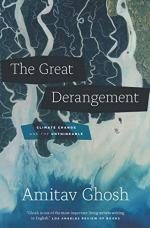
|
| Name: _________________________ | Period: ___________________ |
This test consists of 5 multiple choice questions, 5 short answer questions, and 10 short essay questions.
Multiple Choice Questions
1. When did the destinies of New York and Mumbai become linked to the British Empire, according to the author in Part 1, Section 10?
(a) The 1620s.
(b) The 1590s.
(c) The 1750s.
(d) The 1660s.
2. Where does the author describe experiencing a cyclone that flooded a pond behind his house in Part 1, Section 2?
(a) Chattogram.
(b) Dhaka.
(c) Sythet.
(d) Cox's Bazar.
3. When was the movie made that is referenced in Part 1, Section 1?
(a) 1980.
(b) 1999.
(c) 1977.
(d) 1969.
4. What is the average population of the Greater Mumbai area today?
(a) 15 million.
(b) 20 million.
(c) 10 million.
(d) 30 million.
5. What does the folk epic of the Sundurbans, Bon Bibir Johuranama, translate to in English?
(a) The Miracles of Bon Bibi.
(b) The Death of Bon Bibi.
(c) The Journey of Bon Bibi.
(d) The Damnation of Bon Bibi.
Short Answer Questions
1. Along what river did the author's parents live in their homeland?
2. What storm was generated in the Arabian Sea in 2007, noted as its strongest storm ever?
3. What much-admired historical novel by Paul Kingsnorth is referenced in Part 1, Section 3?
4. Who was the originator of the theory of continental drift?
5. Who wrote the seminal essay "The Climate of HIstory"?
Short Essay Questions
1. Describe the book Storm Surge. Who is its author and what is its premise?
2. How is capitalism defined?
3. Why does the author reference "The Climate of History" in Part I, Section 4? Who wrote this essay?
4. Who wrote The Hungry Tide and what is it about?
5. Who wrote the novel A River Called Titash? What is it about?
6. What is imperialism?
7. In what ways are Mumbai and New York similar?
8. How does Mumbai's infrastructure make it vulnerable to cyclones?
9. What is the central metaphor made by the author in Part I, Section 1?
10. Describe how irony applies in the story about Henry Piddington.
|
This section contains 720 words (approx. 3 pages at 300 words per page) |

|




